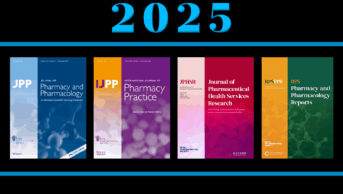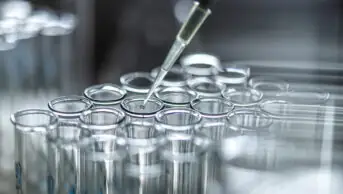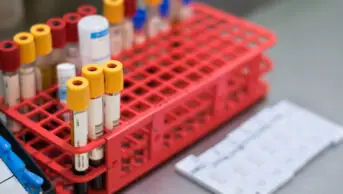As I write, my colleagues within the science and research team at the Royal Pharmaceutical Society (RPS) are contacting the authors who submitted abstracts for poster presentation at the RPS Conference 2024, to deliver news about their submissions.
We were enormously pleased with the number of abstracts we received and even more delighted that the programme now allows us to include five oral presentations from the submissions within the science and research stream of the conference programme. Our happiness derives from an observation that the profession is continuing to recognise the value of research and we hope, by default, that science is being viewed as essential to its progress.
Of course, the science–practice debate is an all too familiar one, which often scrutinises the foundation of pharmacy teaching to question if the content and delivery of the undergraduate course is balanced appropriately. This debate has become important again.
Note, for example, this statement from authors of a paper on how to empower future pharmacists to prescribe. To meet new regulatory standards, the authors state that “removal of some teaching will prove an important challenge in order to ensure that relevant science remains, while still making room for additional prescribing content, as trainees must still apply the science behind pharmacy in all their professional activities”.
One supposes that the implication of this line of reasoning is that the irrelevant science will be removed. While musing over this, I came across a paper that reminded me that such debates are not exclusive to the UK, but often held across the globe. Nonetheless, I spy the danger of a diminishing circle here, where the less of what is thought to be ‘the relevant science’ is taught, the less it can be practised and considered relevant, and so on. On this note, I must admit a personal bias and long-standing desire to capture and better articulate ‘how’ pharmacists apply science in their practice. A blog published by my colleagues in July 2024 — Diane Ashiru-Oredope, deputy chief scientist, and Lauren Ross, research manager, both at the RPS — detailing the application of science by antimicrobial pharmacists provides a perfect case.

This month, I review a selection of papers that neatly address a breadth of sciences relevant to pharmacy. The first, published in Journal of Pharmacy and Pharmacology on 21 August 2024, investigates a range of medicinal plants to determine their pharmacological potential to treat COVID-19 via antioxidant, anti-inflammatory and immunomodulatory properties. I was particularly interested in the molecular docking experiments detailed in the paper; a computational technique that involves predicting the interaction/binding affinity between small molecules/ligands and receptor proteins at the atomic level to aid drug discovery.
Specifically, the authors identified the phytoconstituents of interest in Tinospora cordifoliato, as well as SARS-CoV-2 target proteins, as sites for formation of a ligand-receptor complex structure. They proceeded to analyse the energy parameters associated with the docking interactions experimentally; measuring the binding energy, van der waals and hydrogen bond energy, electrostatic energy and torsional energy, as a way of evaluating how effectively Tinospora cordifolia could interact with key targets. As ever, the authors point to the need for further research, which may be exasperating to those unfamiliar with the incremental nature of science, but as pharmacists we can surely remind ourselves and others of the long history of plants as viable medicines and hold out hope.
The second paper I reviewed, published in Journal of Pharmaceutical Health Services Research on 12 July 2024, was a cross-sectional examination of the US Food and Drug Administration (FDA)’s ‘Accelerated approval’ (AA) pathway for cancer drugs over a 30-year period. The pathway speeds up the development and approval of new drugs and biologics, allowing earlier patient access to potentially life-saving treatments while confirmatory trials take place. It does so by using surrogate or intermediate, rather than traditional endpoints to determine treatment efficacy; for example, shrinkage of a solid tumour rather than overall survival.
The idea is that patients access the medicines while the confirmatory trials are ongoing, with the FDA then deciding on whether to give the medicine its full approval once the trials are complete. The authors examined the number of cancer drugs on the AA pathway and those converted to full approval (‘converted’). They examined both new drug applications and biologic licence applications, to compare ‘drugs’ and ‘biologics’ (products derived from living organisms). They also separated the data by creating three periods of interest — early (1995–2003), middle (2004–2012), and late (2013–2021) — to reflect significant regulatory changes and advances in treatment. What caught my attention was the finding that in the early period examined, the review time for biologics granted accelerated access was 15.6 months, much longer than that for drugs (median 6 months throughout all periods), which the authors attribute to the lack of experience in the early period, noting that it reduced to 5.9 months by the end of the next period.
The final paper I reviewed was published in the International Journal of Pharmacy Practice on 9 August 2024. It examined the compatibility of medication admixtures in continuous subcutaneous infusions. As the authors explain, to meet clinical need (for example, within palliative care), it is sometimes necessary for one or more medicines to be delivered through a single infusion device (e.g. a syringe driver) at the same time. Yet the evidence for chemical or physical compatibility of such drug admixtures can be incomplete, leaving open the possibility of drug–drug, drug–diluent, drug–syringe, and even drug–infusion set interactions.
Such interactions might result in a visible change, but this is not always the case, meaning that combinations used in this way should ideally be supported by actual laboratory analyses. Thus, the authors set out to determine the frequency of admixtures used in clinical practice lacking laboratory studies, to guide the prioritisation of testing in the future. The findings certainly make for interesting reading. The paper itself of course provides yet another reason to make sure that we continue to articulate how pharmacists use their scientific knowledge within their practice.
Perhaps if you are reading this, you can write in and tell us about your own use of scientific knowledge within your practice.


